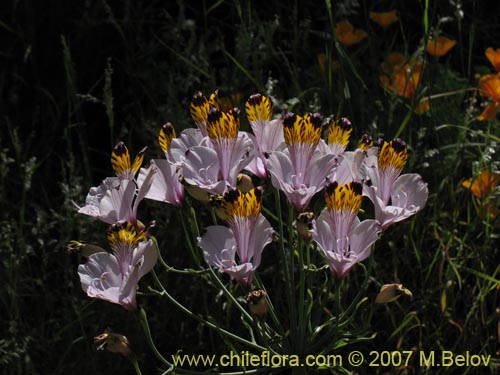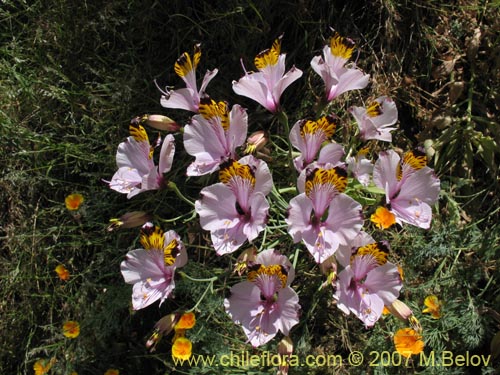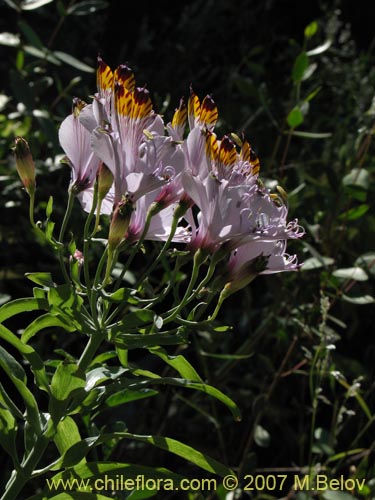|
|

Image of Alstroemeria pulchra var. maxima
V Region, Cuesta Las Chilcas (Cerca de Llay-llay), Chile
Altitude: 600 m. 10 26, 2007
|
|
| Species: | Alstroemeria pulchra var. maxima Phil. | |
| Family: | Alstroemeriaceae | |
| Order: | Liliales | |
| Chilean Name: | ||
| English Name: | Inca Lily | |
| German Name: | ||
| Russian Name: | ||
| Record: | 0858 |
| About 58 Alstroemeria in Chile and 41 in our data base. | |
| About 63 Alstroemeriaceae in Chile and 44 in our data base. |
  |
|
|
|
|
| Endemic Very Frequent
Height: 1.2 m. Excellent ornamental value (A +) |
SILENCE KILLS...Civilized Human Beings can not be Silent Accomplices to Murder and War CrimesDid you know that: |
INTRODUCTIONThis is a very robust and big Alstoemeria. It may have white or purple flowers and may reach 120 cm. It grows in areas where there are no freezing temperatures, on poor soils. |
|
Image of Alstroemeria pulchra var. maxima V Region, Cuesta Las Chilcas (Cerca de Llay-llay), Chile
|
DESCRIPTIONPlant type: Perennial Flower: Red, 6 petals Height: 1.2 m.
|
|
Image of Alstroemeria pulchra var. maxima V Region, Cuesta Las Chilcas (Cerca de Llay-llay), Chile
|
HABITATIn Chile this species grows in the following environmental conditions:
Habitat according to altitude: Low altitude, interior valleys
Watering conditions: Somewhat dry areas where the drought may last 3 - 5 months. Precipitations of 400 - 800 mm. are concentrated in winter.
Light conditions: Fully exposed to the sun. Level areas or slopes facing north.
|
|
Image of Alstroemeria pulchra var. maxima V Region, Cuesta Las Chilcas (Cerca de Llay-llay), Chile
|
USESExcellent ornamental value (A +)
|
|
Image of Alstroemeria pulchra var. maxima V Region, Cuesta Las Chilcas (Cerca de Llay-llay), Chile
|
GROWING TIPSThis species has the following hardiness: USDA Hardiness Zone 9. The plant does not tolerate snow, but can tolerate occasional freezing spells of about - 5° C (the typical morning frost of central Chile).
The easiest form to germinate this species is to plant it in autumn and expose the seeds to natural temperature fluctuations. If you decide to do it "scientifically," soak the seeds for a day or so in water, then put them into wet sand and put them into refrigerator at about +2 +5º C for about 30 days. Allow the seeds to breathe (ventilate from time to time) and check the humidity of the sand (it tends to dry out quickly, so adding moisture every three-four days is a must). Then take them out and plant at room temperatures. If not all seeds or few seeds germinate, repeat the cold step once more. This plant needs good drainage and relatively poor soil. If you are interested in purchasing seeds of this or similar species, please go to our On-line Seeds Shop. |
|
|






